Tables filled with exotic produce, deep fryers sizzling with fritters, Sicilian nonnas snaking their carts through the crowds to visit the vendors they’ve purchased from for decades. It’s just another typical morning in the Palermo markets. Though an increasing number of tourists filter in with the locals now, these outdoor centers have been much the same for centuries.
The historic markets in Palermo, Sicily, feel a lot more like the medinas of Marrakech or Cairo than the festivals of fresh vegetables in the city squares of Provence or the spectacular covered markets of Rotterdam or Athens. When you consider that Palermo is closer to Tunisia than to Rome, everything starts to make a little more sense. Arab influence in Sicily began over 1000 years ago, and these markets are some of the best-preserved of the island’s Arab traditions.

Top Palermo Markets
The four historic quarters of Palermo each have their own market. But Ballarò, Vucciria, and Capo are the most prominent when it comes to historical charm and popularity with both locals and tourists alike. While the open-air markets are a chef’s playground, they’re also a great place to watch local life. Even if you have no intention of buying anything, they’re a must see in Sicily.
Visiting Palermo’s three largest markets is one of the popular things to do in Palermo. Here’s a look at what you can expect.
Ballaro Market
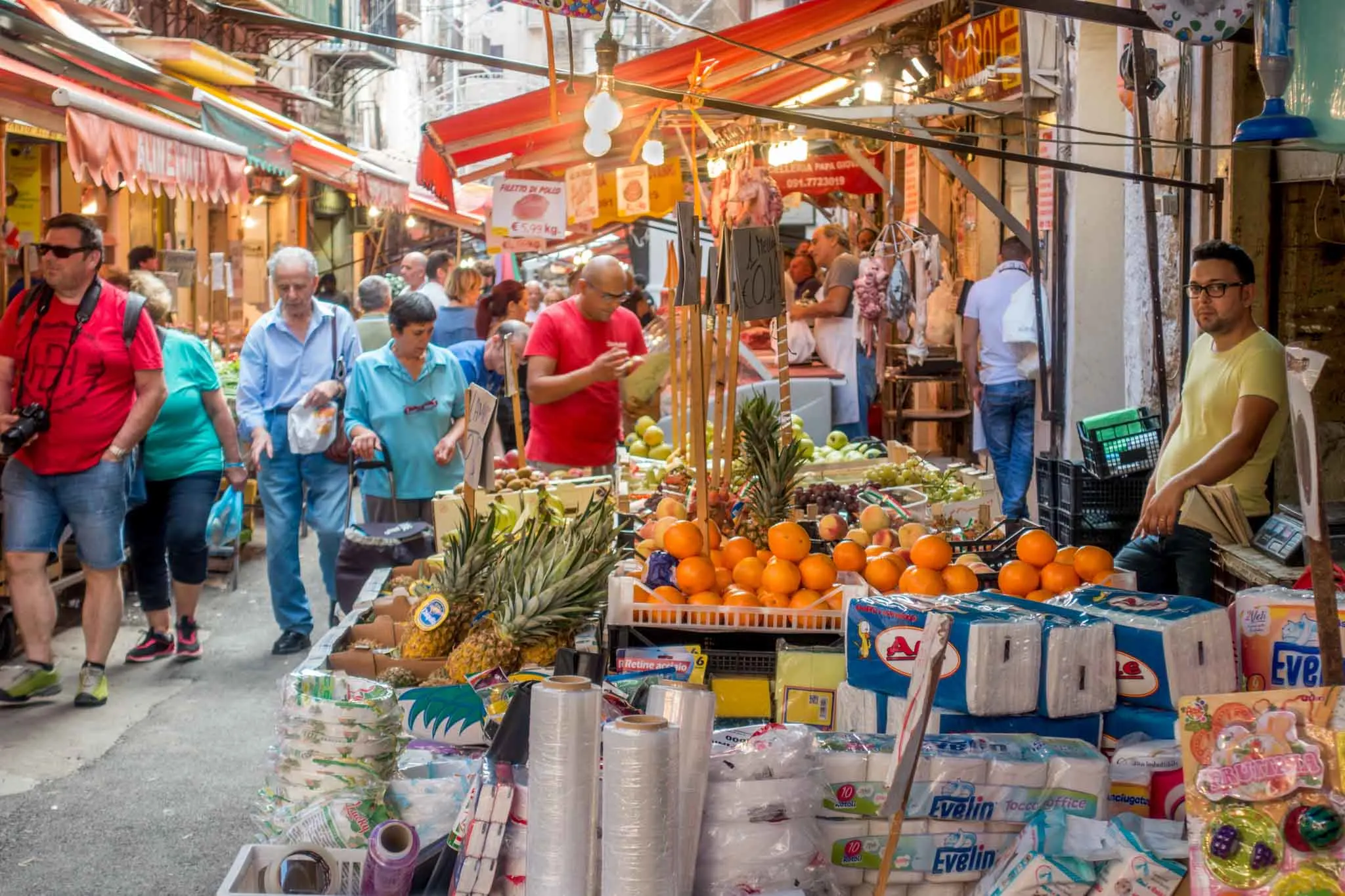
Like a call-and-response prayer, the singing of the merchants at the Ballaro market greeted us before we were sure we were in the right place. I can’t tell you what they were saying or whether it was even real words, but the rhythmic sounds immediately drew us into the lively market.
The Ballaro market, on the south side of the city, is the most famous market in Palermo and was a highlight of our trip to Sicily. In one of the poorest neighborhoods, many of the buildings that line the market look somewhat run-down, which only seems to add to the atmosphere of authenticity. There is no concern here that the setting is being contrived just for tourists. This is clearly a genuine part of life in Palermo.
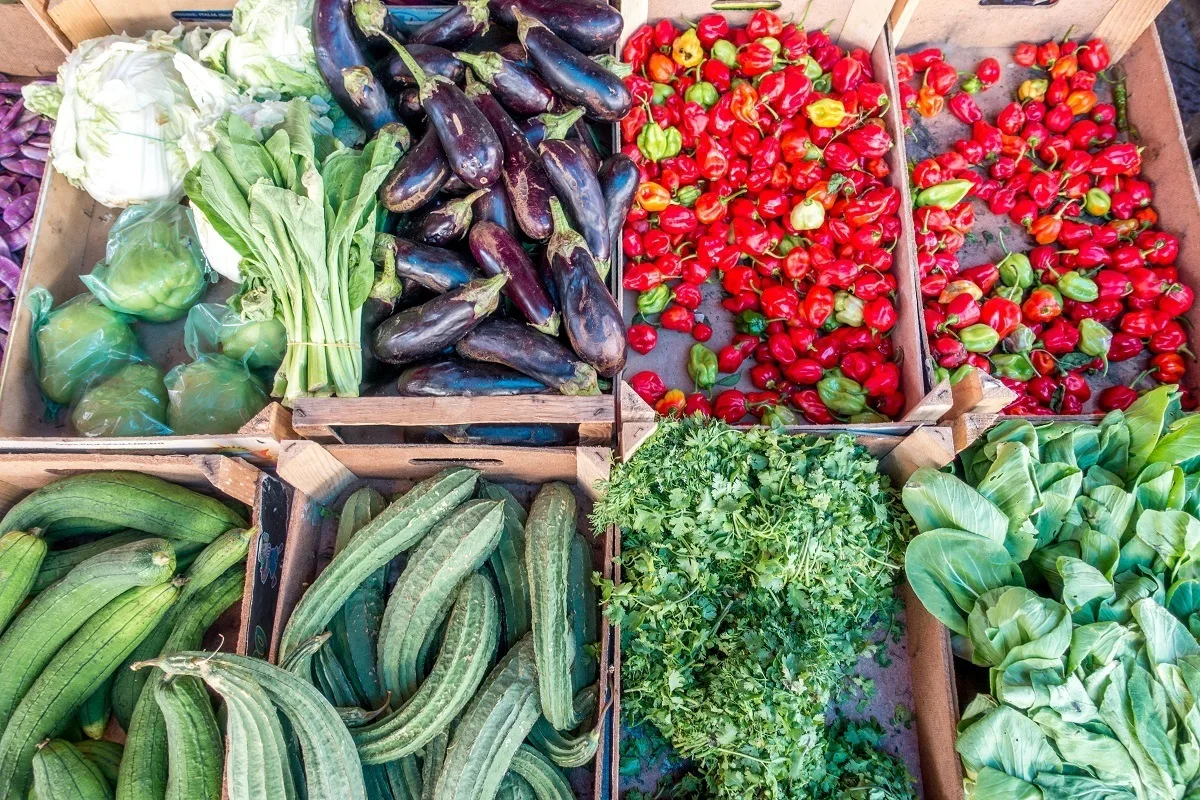
As we walked along through the streets, food stalls spilled forth from their closet-like storefronts. Under tents and awnings, the food was artfully displayed, cramming the paths with a cornucopia of fresh produce and meats. Vendors offered samples of juicy melons and their most popular cheeses to every potential customer passing by.
Meanwhile, scooters and mopeds twisted through the crowds, making deliveries, doing their own shopping, or cruising on their way to somewhere. After all, these expanded grocery aisles are still regular streets.
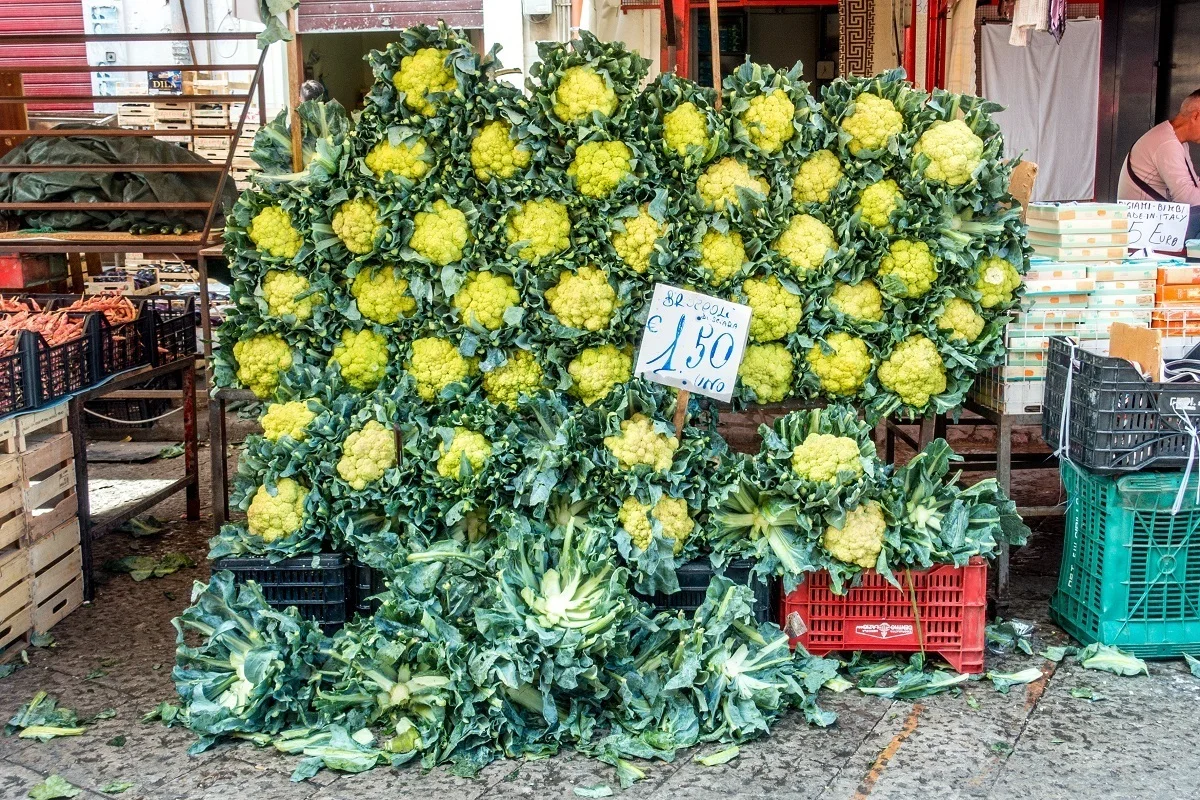
Everywhere we looked, the multiculturalism of Ballaro was clear. There was the typical food you might expect of Italy—olives, prosciutto, and the eggplants that make the base for Sicily’s famous pasta alla Norma. But alongside them was cumin, coriander, curry spices, and the couscous that’s popular not far away in North Africa.
Beside all the fresh food and spices and the occasional clothing vendor, street food is also big business in the Ballaro market. Originally developed as cheap food that could be afforded by the poor people of Sicily, Sicilian street food is now enormously popular with people of all economic backgrounds and certainly shouldn’t be missed when you visit Palermo (and, luckily, it’s still cheap).
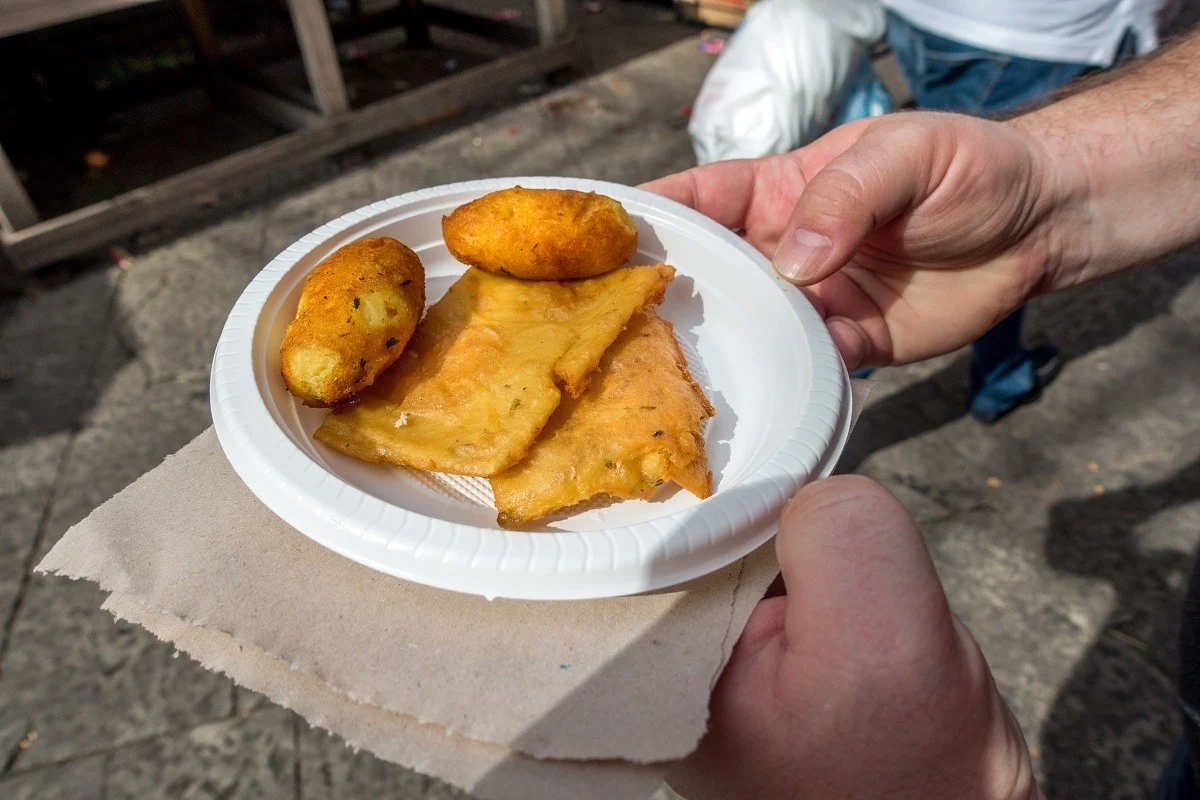
For just one euro, we indulged in a few Palermo street food specialties. There was pane e panelle, the city’s famous fritters made with chickpea flour and crocche, potato croquettes hot from the fryer. As you walk through all the markets, you’ll notice that small fried foods designed to be eaten on the spot are a big theme.
La Vucciria Market
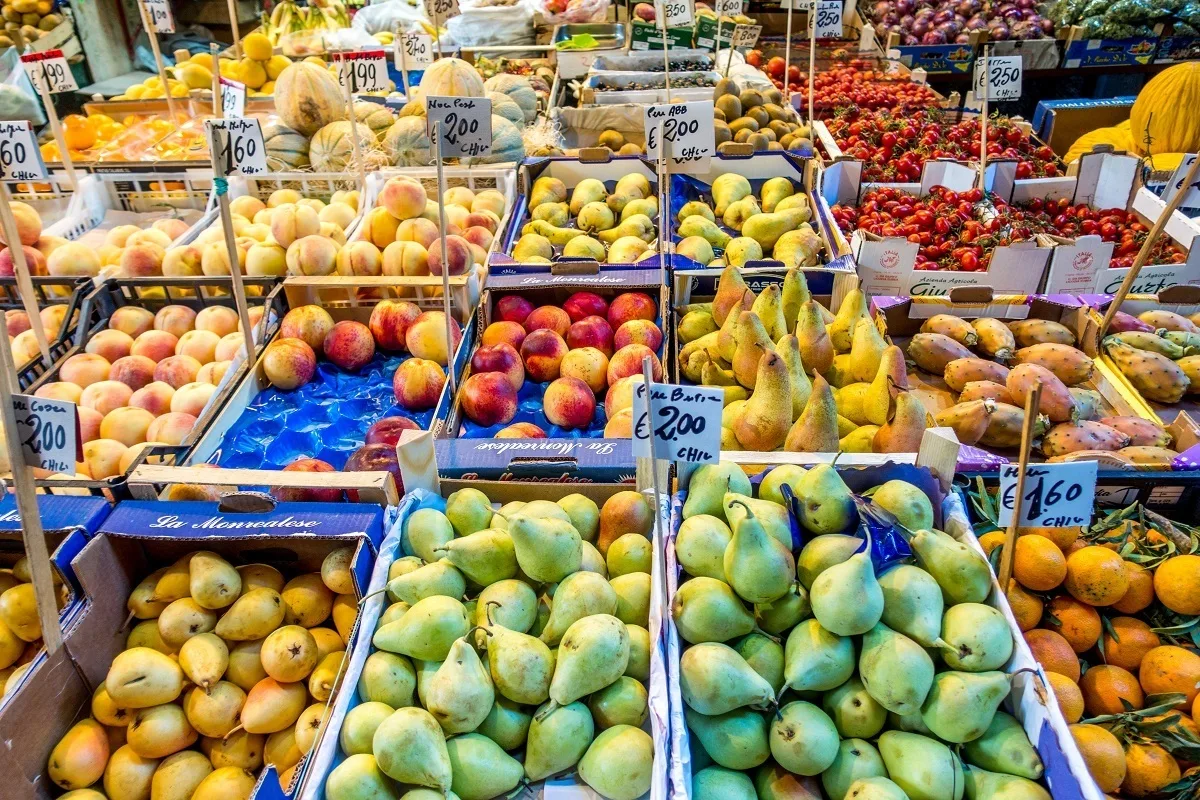
The first thing we saw stepping under the large “La Vucciria” sign was a group of men deeply engrossed in their afternoon card game. It was immediately clear that the level of activity in the Vucciria market was a little calmer than what we had experienced that morning in the friendly melee of Ballaro, though afternoons are always quieter than mornings anyway.
The calmer pace that exists today in the Vucciria market is tinged with irony when you consider that “Vucciria” translates to “voices” or “hubbub.” The smallest of the three markets, it spreads through the side streets around the Piazza San Domenico. As in the Ballaro market, the streets are filled with tented produce stalls, though the group of eager vendors is noticeably smaller.
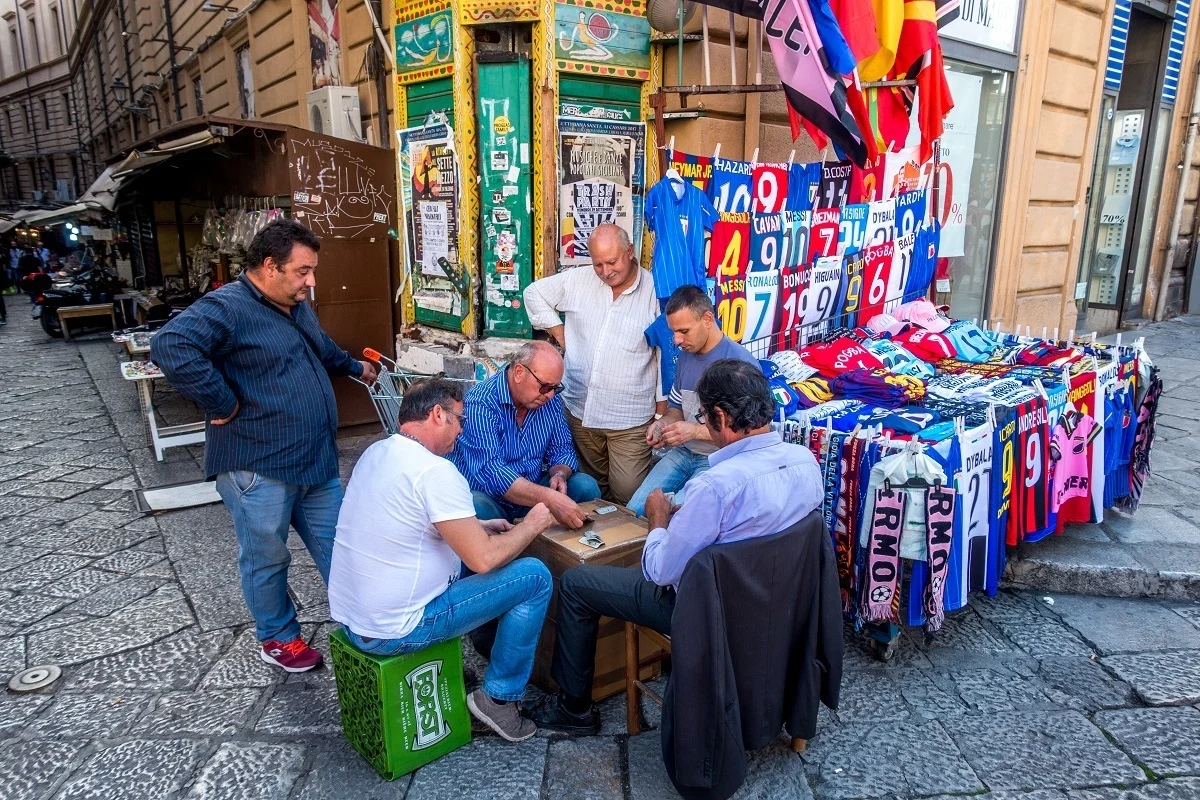
Vucciria has the requisite selection of fruit and vegetables punctuated with butchers and fishmongers whose wares come with their own distinct sights and smells. It, too, has been in the same place for centuries and shows a bit of wear.
Where the other markets draw character from their rough-around-the edges surroundings, Vucciria feels less energized and grittier. It is no longer at the cross-section of trading of those ancient merchants from Asia, North Africa, Pisa, and Genoa. Indeed, it seems to have fallen off the radar of many Palermitani, too, at least when it comes to food shopping.
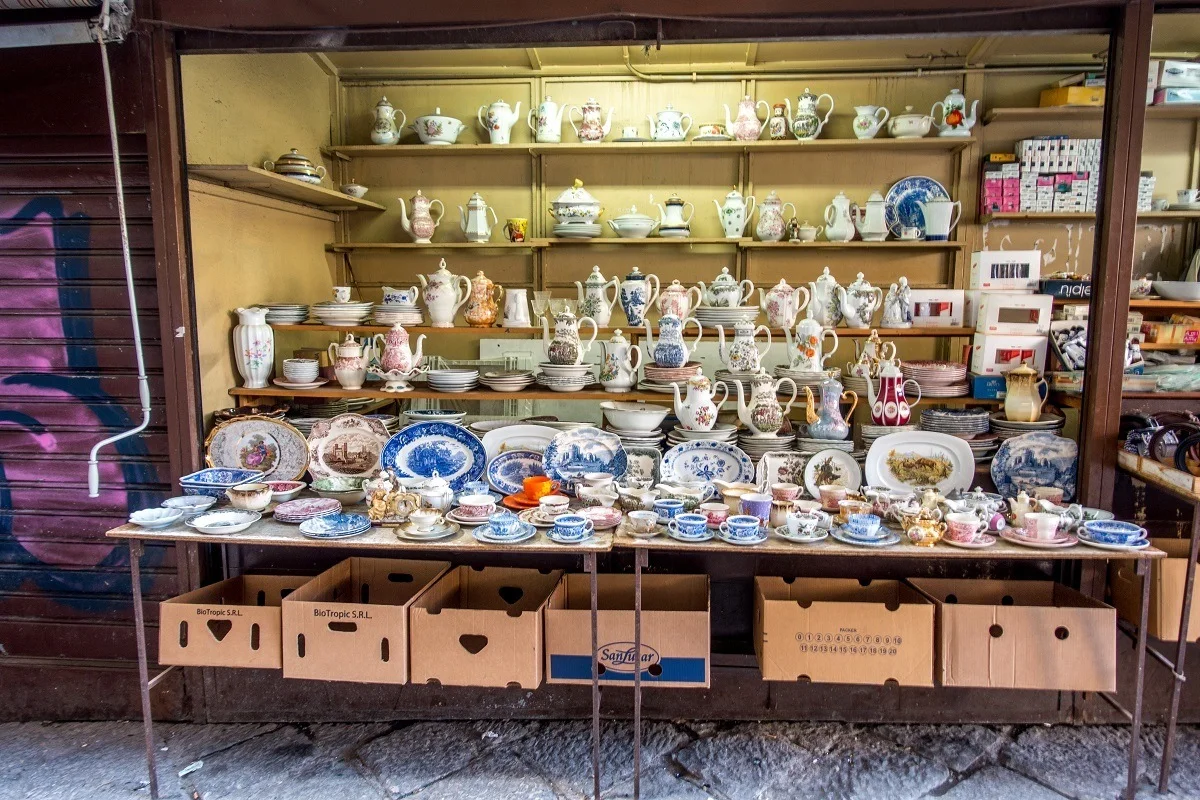
Where the Vucciria market distinguishes itself is in the wide variety of housewares available, making it feel more like a flea market than an historic food market. As we walked, we discovered piles of old books, curated dishes, vintage posters, and a smattering of everything someone could need for their house.
While the Vucciria is a little past its prime during the day perhaps, it truly comes alive when the sun goes down. All of young Palermo seems to file into the streets, eating, drinking, and dancing their way between Piazza Caracciolo and Piazza Garraffello.
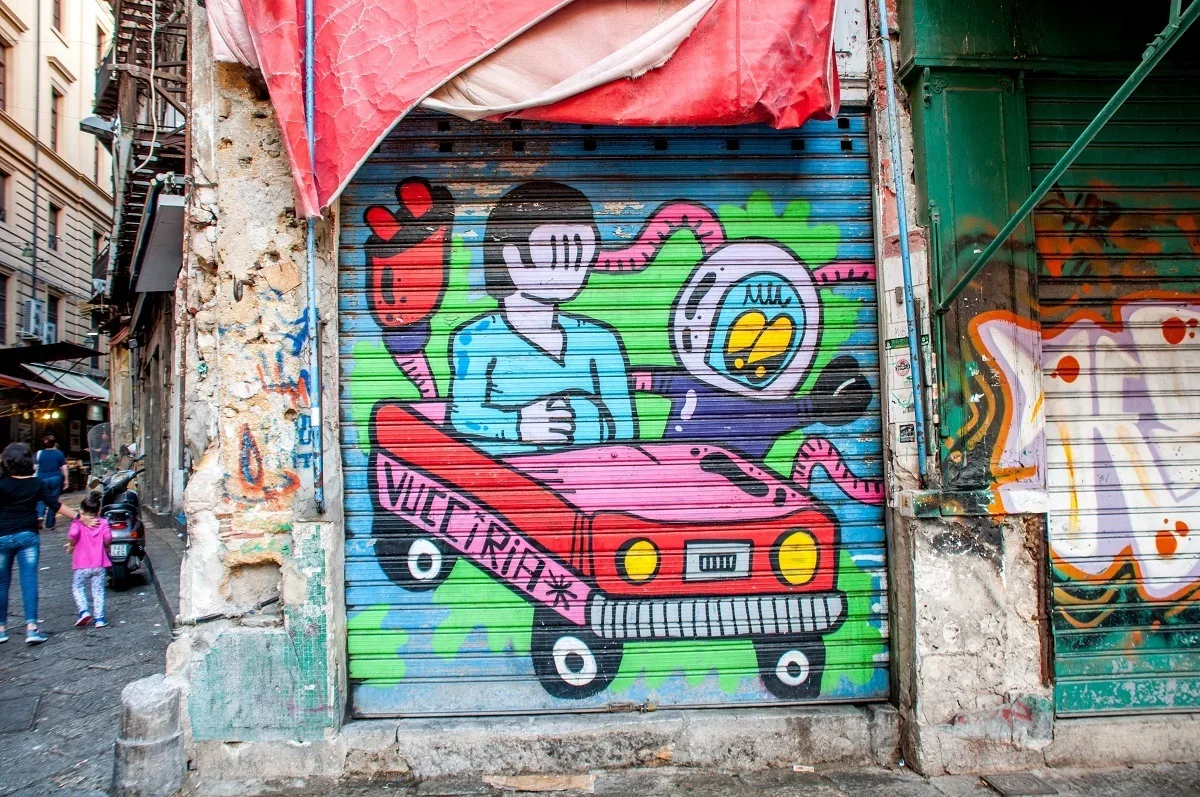
A night at Mercato della Vucciria is an inexpensive way to fill up on street food and see all the different characters Palermo has to offer, from university students to the rich and hip. You can party and dance until the sun comes up.
Capo Market
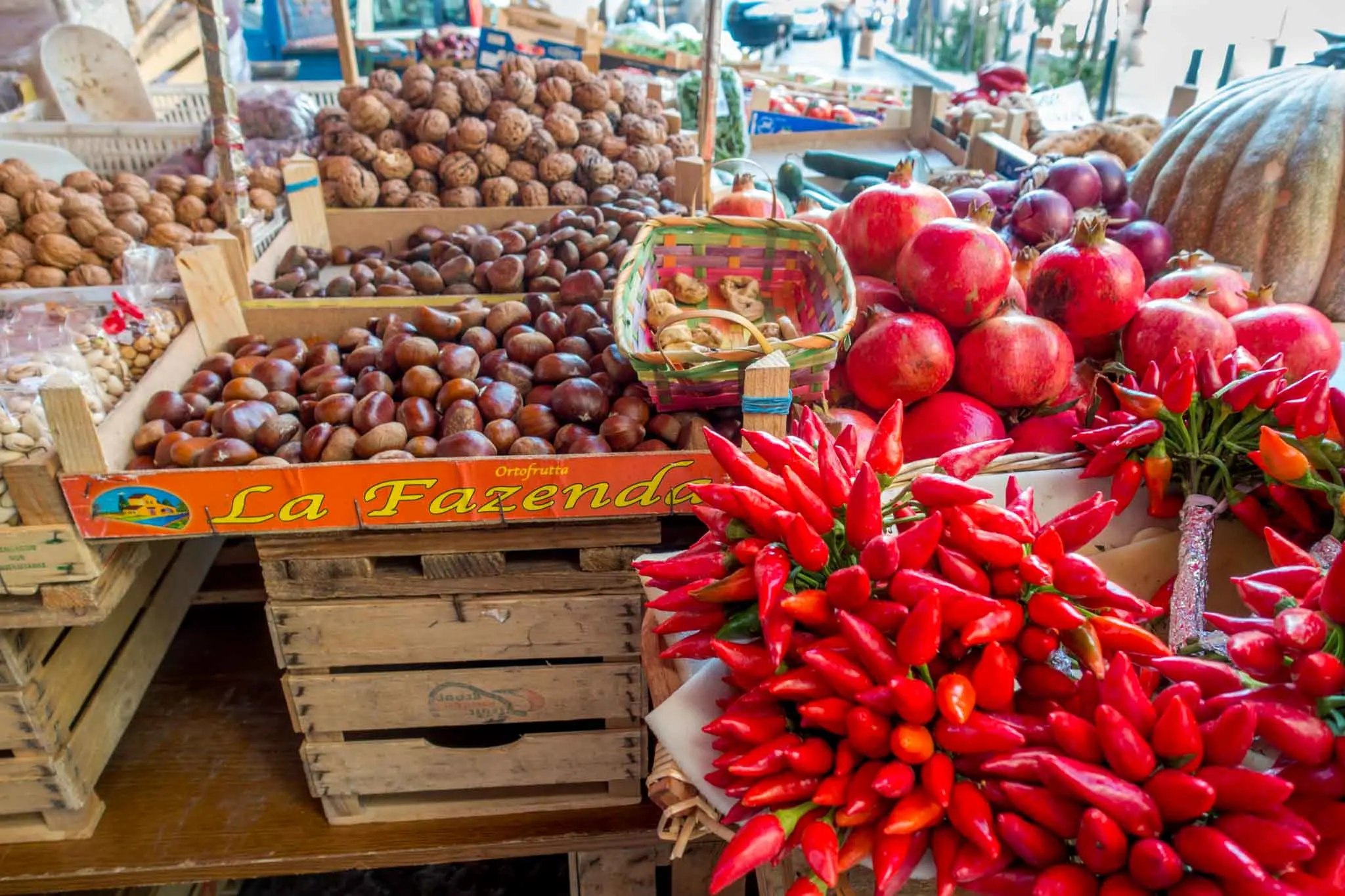
Following the aesthetic of the Arabs who originally established the market centuries ago, the Mercato di Capo maintains its maze of lanes and alleyways. Running through the Capo and Albergheria quarters, the labyrinth makes visitors feel like they’re in a North African souk.
We started our visit to Capo entering through the Porta Carini, one of the oldest city gates of Palermo. Dating back to at least 1310, the doorway originally marked the road leading to the village of Carini. Now it marks the beginning of the circus that is the Capo market.
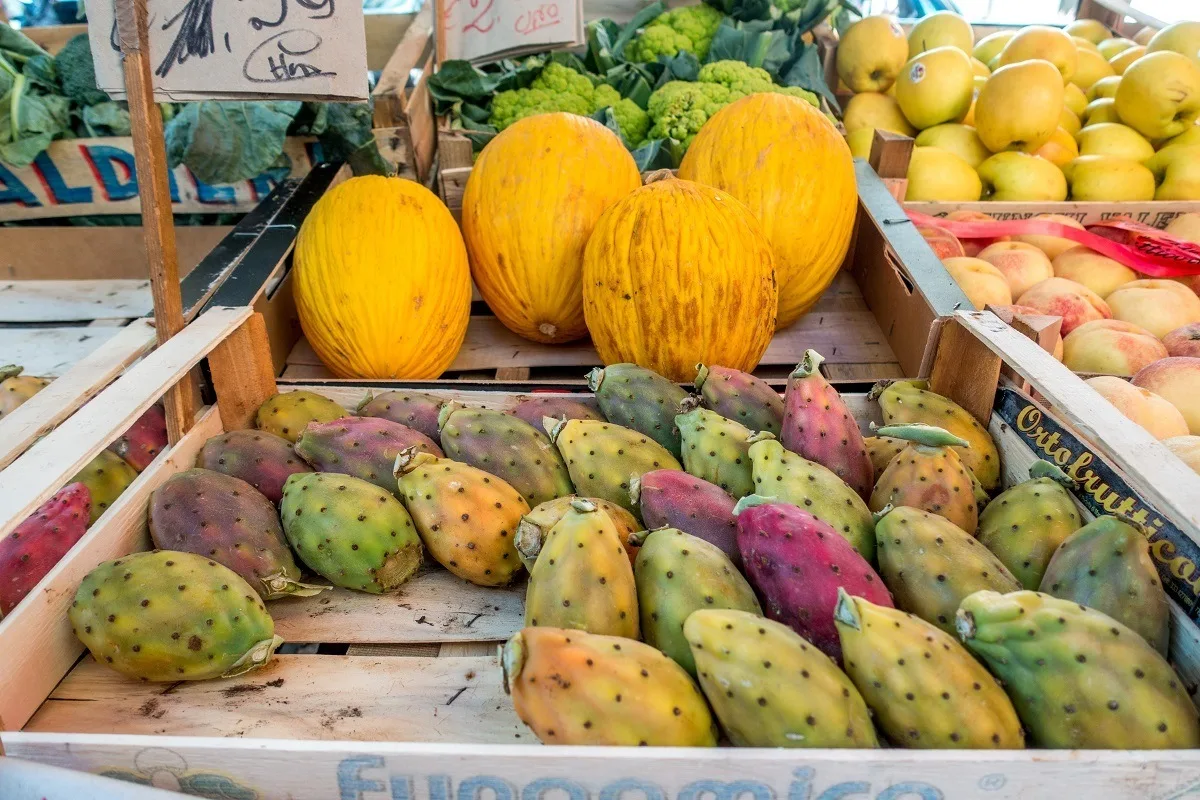
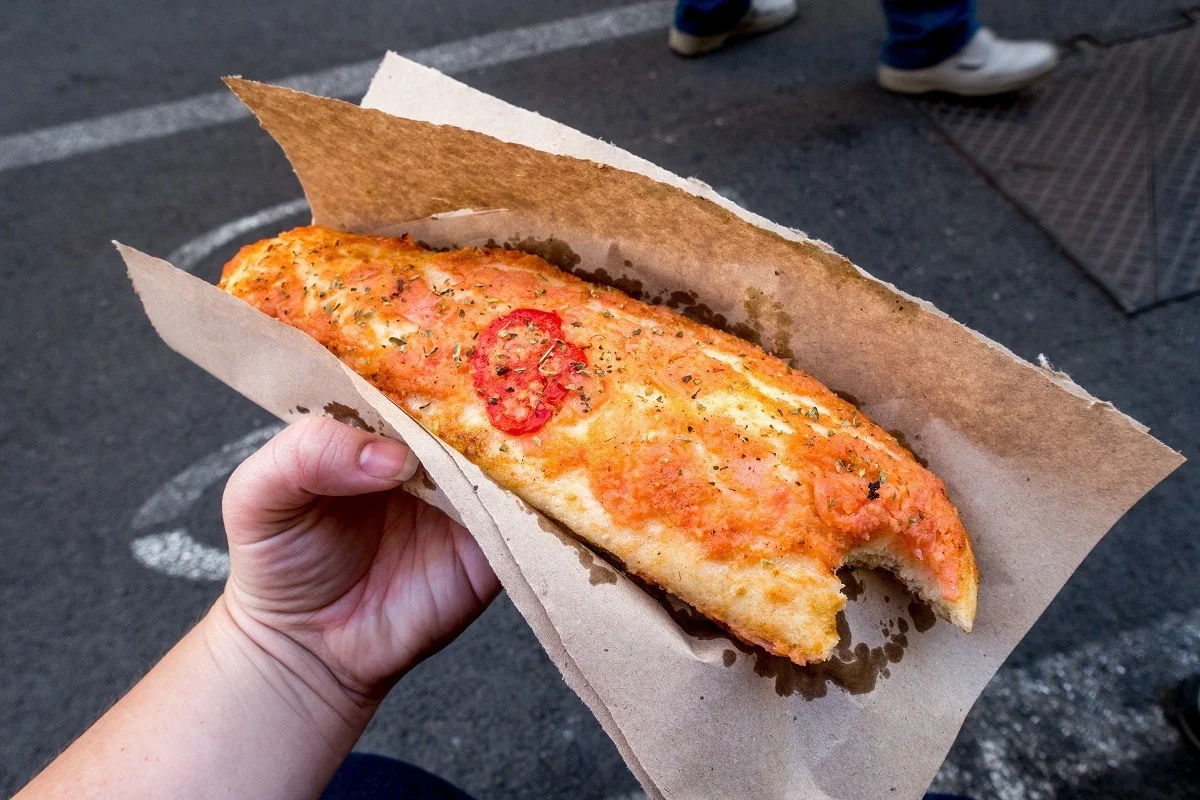
Much like Ballaro, Capo is a lively food market. As soon as we entered the narrow streets, we were welcomed with the aromas of cooking food—first the fryers and then the carts selling sfincione, a pizza-like Sicilian street food made with onions and delicious aged cheese.
Then there were the food stalls hawking everything under the sun. A bounty of sundried tomatoes was offered for the tasting alongside bright red peppers of unknown spiciness. Cacti, tropical fruits, and other produce we’d never seen before sat nearby. These Sicilian markets are a dream for people who love colors and new flavors.
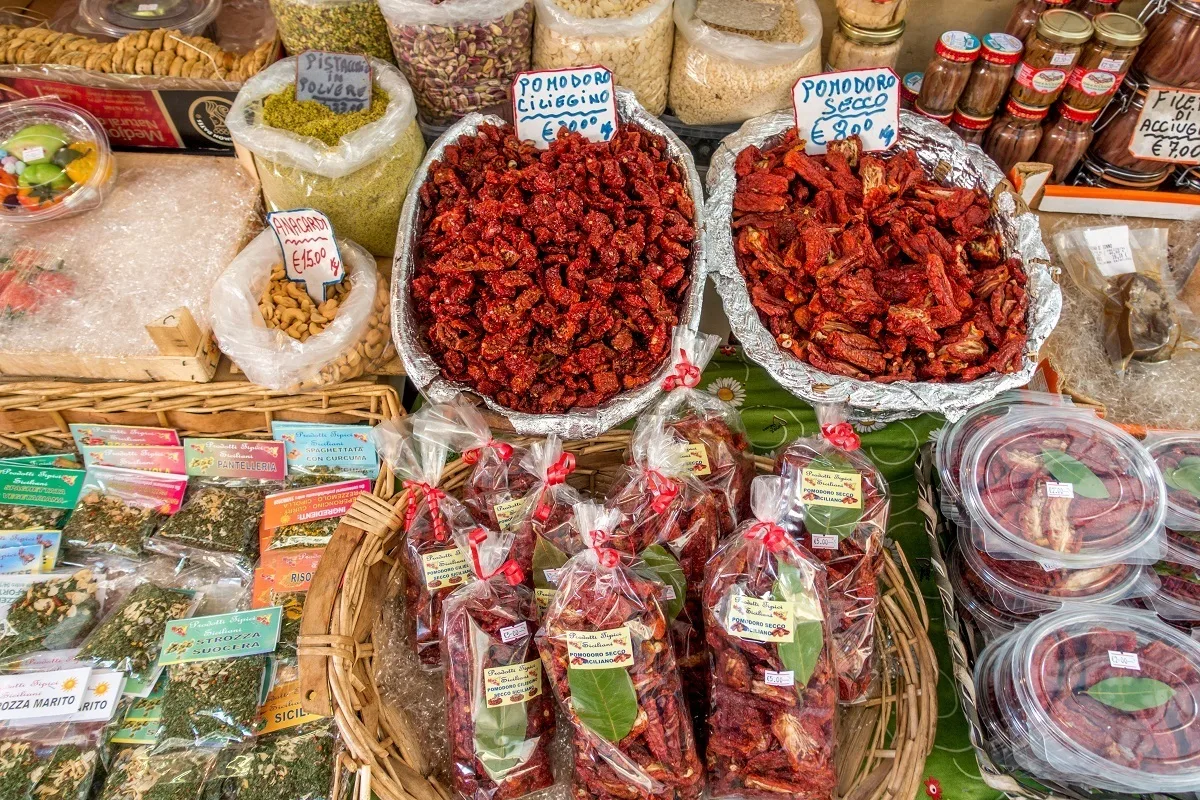
As we ventured a little deeper into the Capo market, we came upon the meat stalls. Meat hung from hooks in white-tiled storefronts where we tried not to breathe too deeply. At the tables of fresh fish and squid, merchants prepared the catch of the day for anyone walking by. A little bit of turbot, a lot of mussels, and plenty of swordfish prized by the locals.
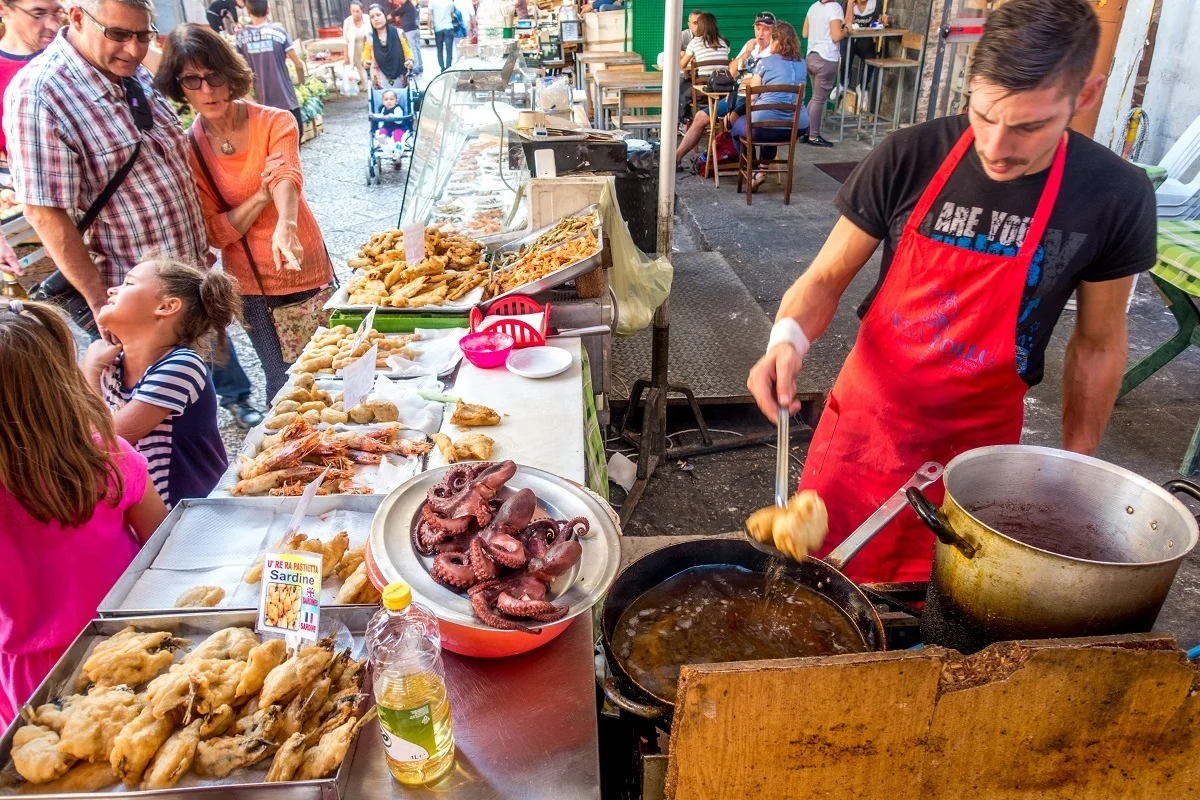
Intermixed with the fresh food stalls, we found plenty of cooks ready to help us try more street food or something a little bit fresher from one of the merchants nearby. Just see if you can resist the piping hot arancini or calamari flash-fried nearly straight from the ocean.
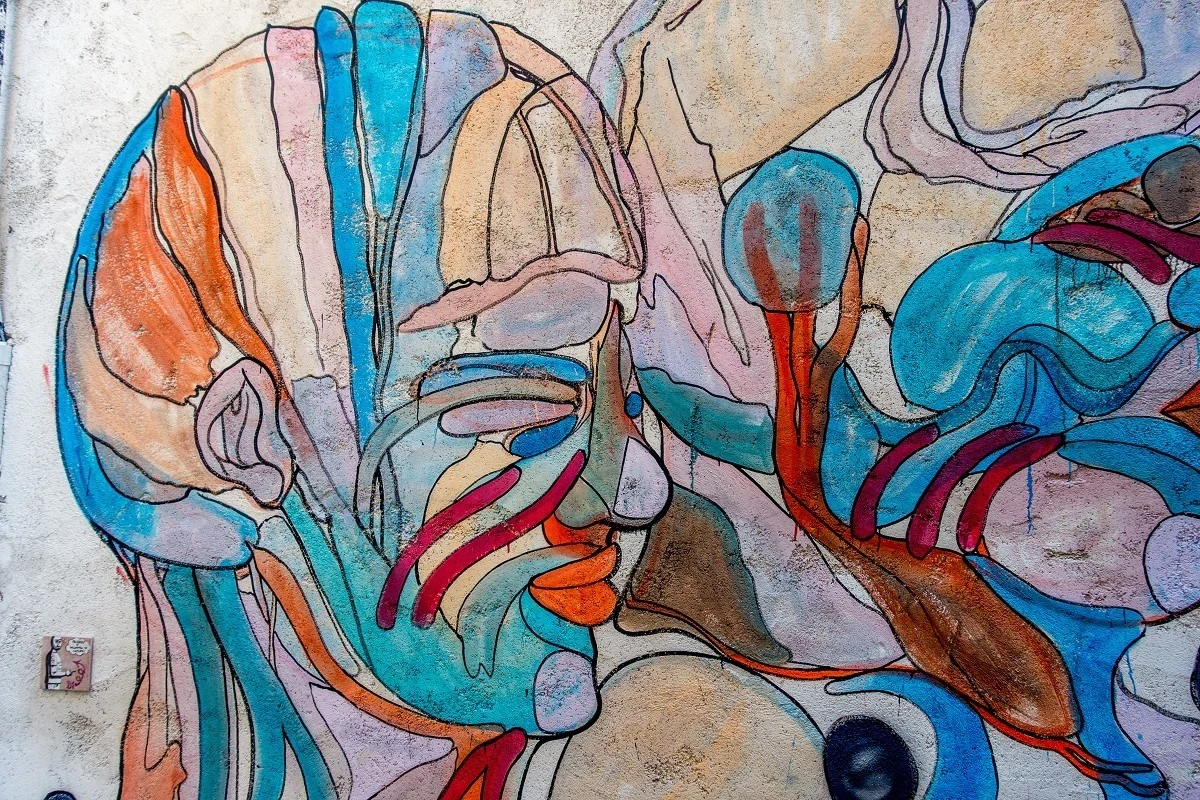
In addition to all the food, it’s impossible to miss the street art in the Capo market. Around each corner, there seems to be a new mural—some decorative, some funny, some social commentary. All of it adds to the rainbow of experiences and things to see in the market.
Safety in the Markets
All three Palermo markets are busy places. People are often close together, jostling each other to talk to merchants, make purchases, and get out of the way of passing mopeds. That all leads to a lot of contact and the possibility for valuables and cash to go missing in a flash.
Be aware of yourself–and your camera, phone, and money–as you walk through the markets. Don’t set anything down or take more money than than you need. While the markets are not dangerous places, there may be people waiting to separate you from your belongings, if you’re not careful.
Laura Longwell is an award-winning travel blogger and photographer. Since founding Travel Addicts in 2008, she has written hundreds of articles that help over 3 million people a year get the most out of their travel. In that time, she has visited nearly 60 countries on 5 continents, often returning to favorite destinations over and over again. She has a deep love of history, uncovering unexpected attractions, and trying all the good food a place has to offer.
In addition to Travel Addicts, Laura runs a site about her hometown of Philadelphia—Guide to Philly—which chronicles unique things to do and places to see around southeastern Pennsylvania. Her travel tips and advice appear across the web.

Brit
Wednesday 13th of March 2024
Great info as we’re about to head to Sicily. Do you recommend that we bring cash, or do they accept credit cards in the markets and shops? Thank you so much in advance.
Laura Longwell
Friday 22nd of March 2024
Cash will definitely be useful in the markets. I assume most shops will take cards.